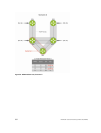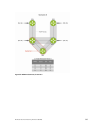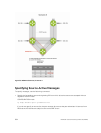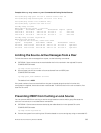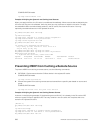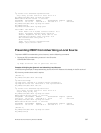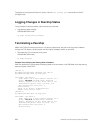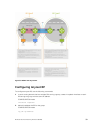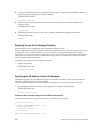
03:17:10 : MSDP-0: Peer 192.168.0.3, rcvd Keepalive msg
03:17:27 : MSDP-0: Peer 192.168.0.3, sent Source Active msg
Input (S,G) filter: none
Output (S,G) filter: none
MSDP with Anycast RP
Anycast RP uses MSDP with PIM-SM to allow more than one active group to use RP mapping.
PIM-SM allows only active groups to use RP mapping, which has several implications:
• traffic concentration: PIM-SM allows only one active group to RP mapping which means that all
traffic for the group must, at least initially, travel over the same part of the network. You can load
balance source registration between multiple RPs by strategically mapping groups to RPs, but this
technique is less effective as traffic increases because preemptive load balancing requires prior
knowledge of traffic distributions.
• lack of scalable register decasulation: With only a single RP per group, all joins are sent to that RP
regardless of the topological distance between the RP, sources, and receivers, and data is transmitted
to the RP until the SPT switch threshold is reached.
• slow convergence when an active RP fails: When you configure multiple RPs, there can be
considerable convergence delay involved in switching to the backup RP.
Anycast RP relieves these limitations by allowing multiple RPs per group, which can be distributed in a
topologically significant manner according to the locations of the sources and receivers.
1. All the RPs serving a given group are configured with an identical anycast address.
2. Sources then register with the topologically closest RP.
3. RPs use MSDP to peer with each other using a unique address.
590
Multicast Source Discovery Protocol (MSDP)



